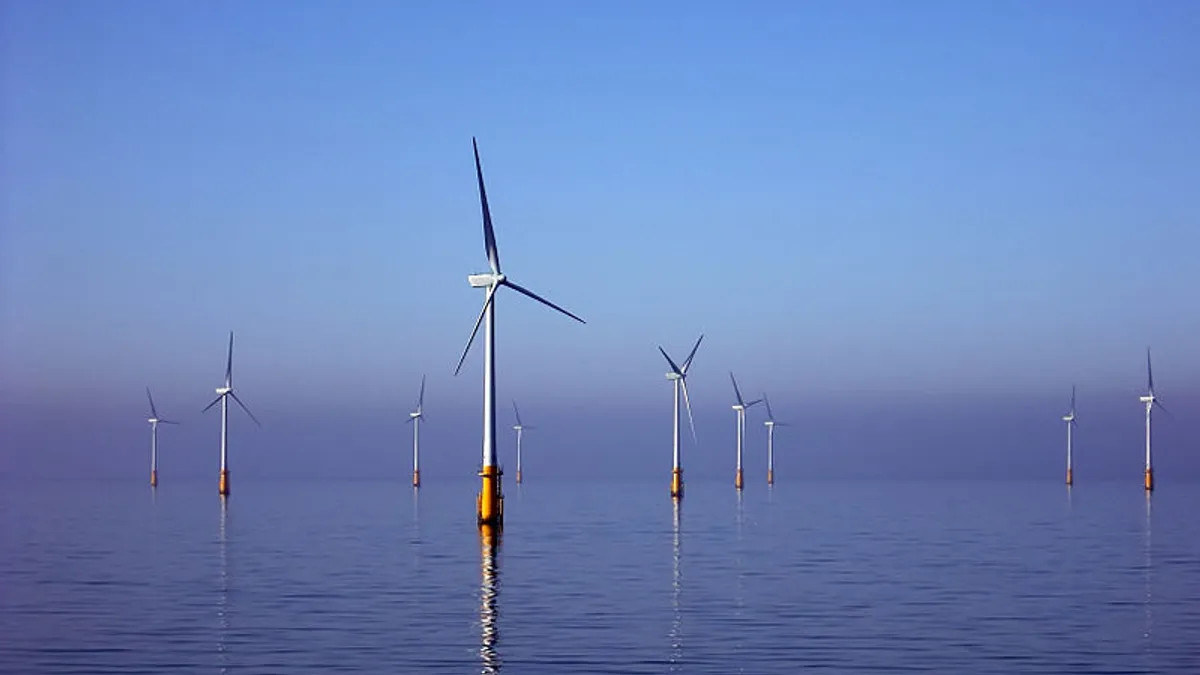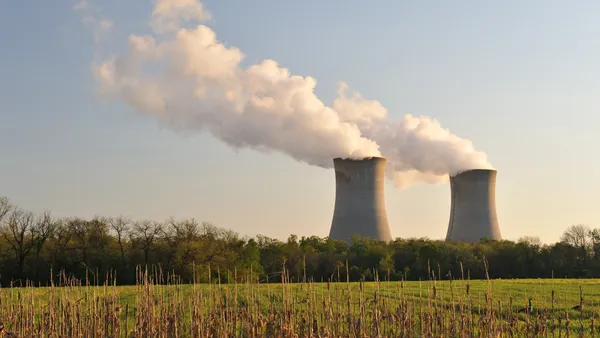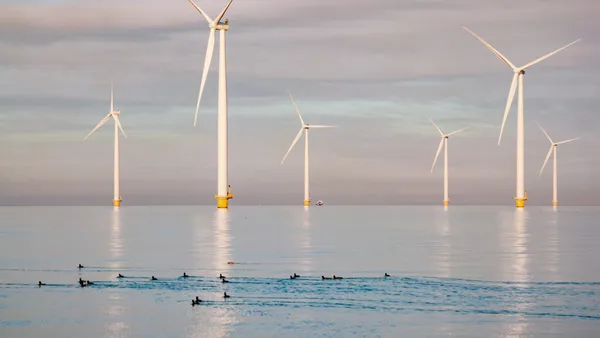Dive Brief:
- The Bureau of Ocean Energy Management (BOEM) has moved two proposed wind energy areas soon to be available for leasing by ocean wind developers from North Carolina to South Carolina, leaving only the 122,400-acre Kitty Hawk area available for North Carolina offshore wind development.
- The Interior Department agency’s changes were in response to North Carolina concerns about offshore wind projects’ impacts on its coastal views, wake effects that could reduce the productivity of closely-sited projects, and potential harms to the habitat of the North Atlantic Right Whale.
- Developers that have expressed interest in leasing the tracts are Dominion Virginia Power, EDF, Fishermen’s Energy, Green Sail Energy, U.S. Wind, and Apex Wind Energy subsidiary Outer Banks Ocean Energy. BOEM is reviewing the developers’ qualifications and preparing environmental assessments.
Dive Insight:
Dominion Virginia Power is the first U.S. utility to consider developing its own offshore wind project. The utility and its partners in Virginia Offshore Wind Technology Advancement Project (VOWTAP) hold a lease off the Virgina coast for a pilot 12 MW, 2-turbine installation for which the Energy Department awarded them a grant in 2014. The utility has yet to begin development because of concerns about the high cost of electricity from such an infrastructure undertaking.
Cost issues have stymied other offshore wind projects as well, but the first U.S. facility is slated to go online this summer, and researchers say further cost declines could be in the offing.
Deepwater Wind's 30 MW, five-turbine Block Island Wind Farm off Rhode Island's coast will be the first operating U.S. offshore wind project when it goes online this summer. Its 20-year power purchase agreement commits all output to National Grid, one of New England’s biggest electricity suppliers, at $0.244/kWh.
The University of Delaware Special Initiative on Offshore Wind concluded, in its recently-released study, that a commitment to developing 2,000 MW of offshore wind from 2020 to 2030, with current technology advances continuing, could reduce the previous estimate of offshore wind's levelized cost of energy (LCOE) of $0.24/kWh to $0.108/kWh.













